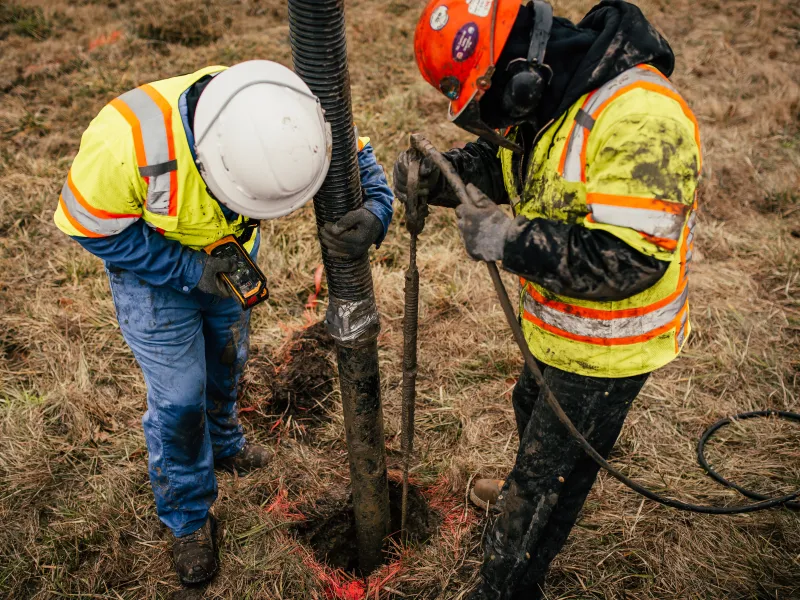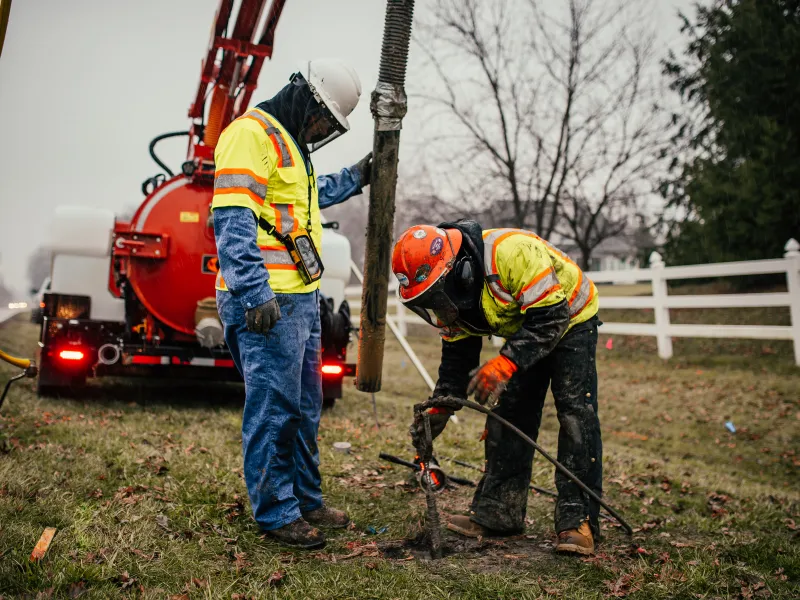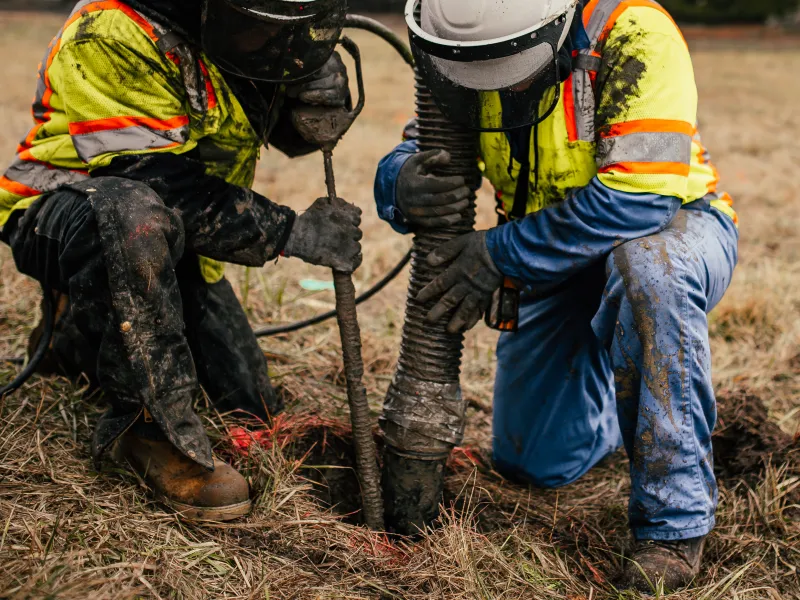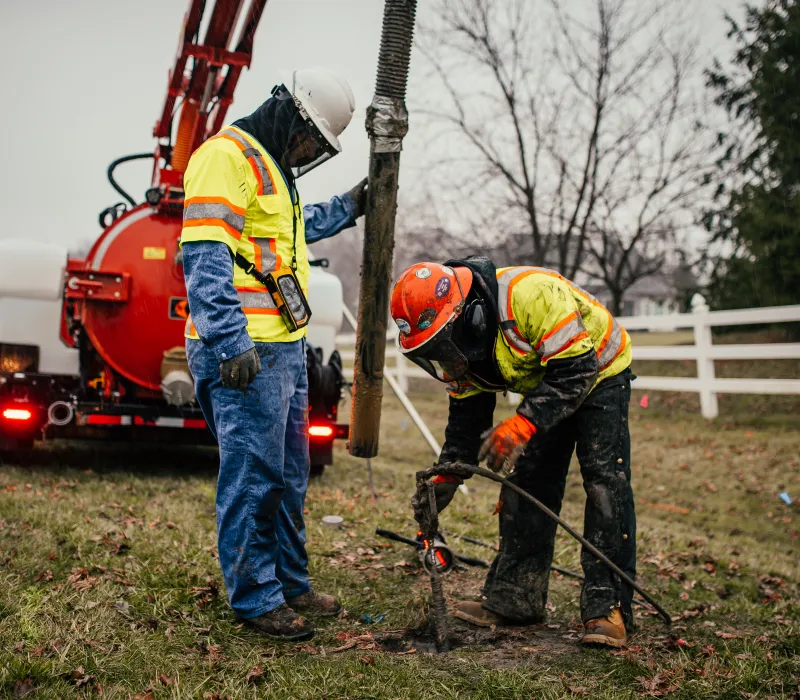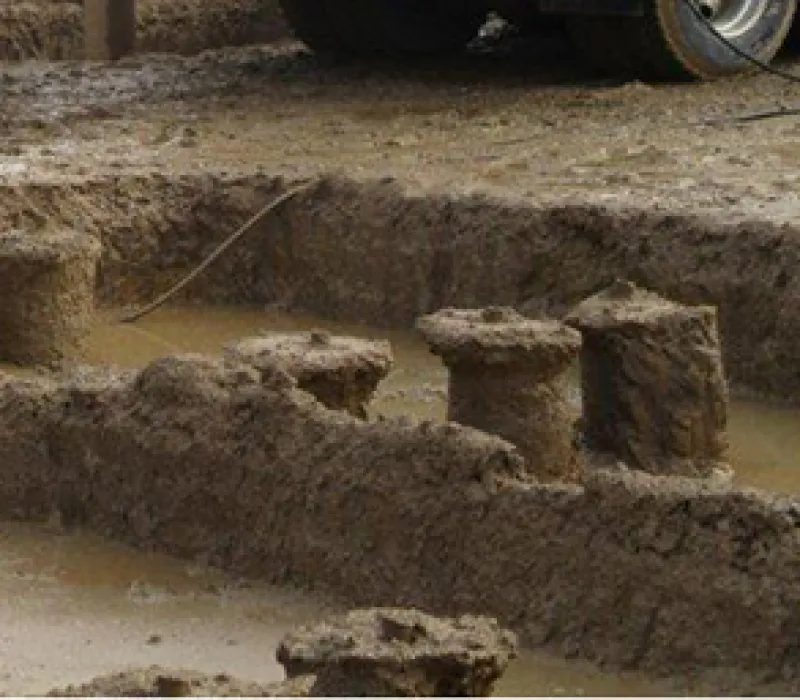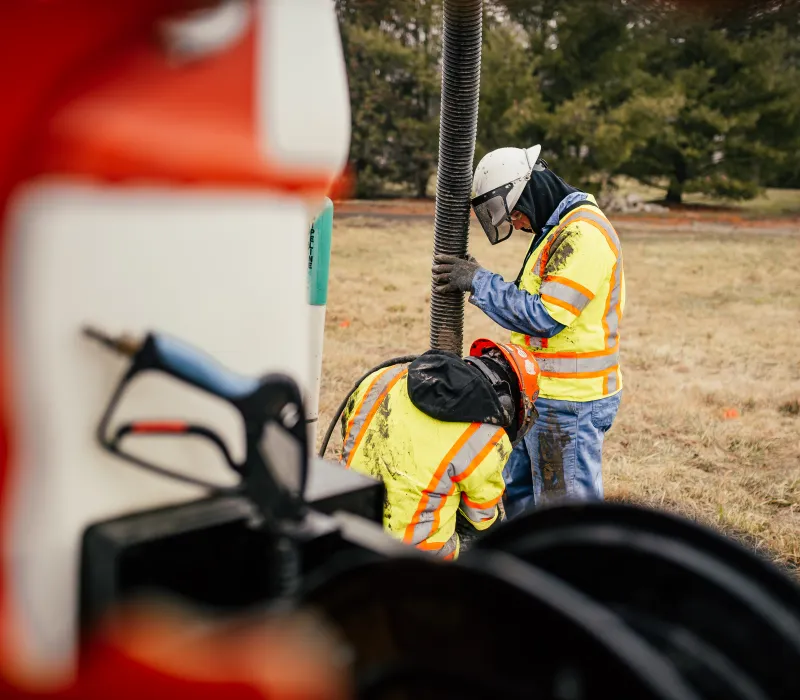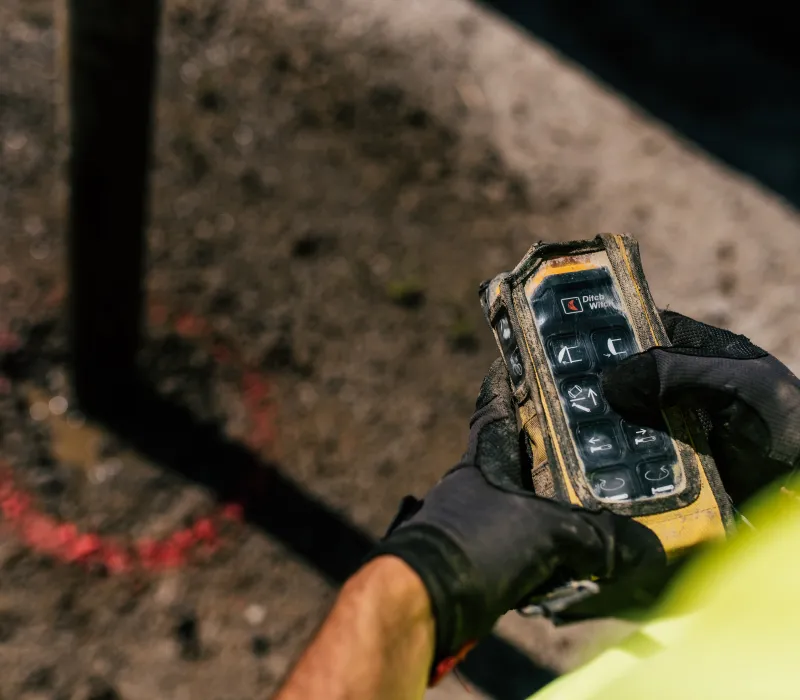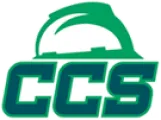Vacuum Excavation Services
Low Impact and Non-Destructive
Reduce the Risk
Most Vac Ex companies cannot locate, MPL does both. Your One-Stop shop for Vac Ex & Locating.
MPL's vacuum excavation services are a non-mechanical and less invasive method of excavation. A blast of air or water (hydro) is first directed into the dig site to loosen soil and break up any large materials in the soil. An air vacuum hose is then used to remove the debris from the hole and transfer it to a specially designed tank. Stored soil can be transported elsewhere or, if dry, re-used as fill. For vacuum excavation companies that provide Vac EX and locating, turn to MPL.
Vacuum excavation reduces the need for manual hand digging or abrasive excavation methods, which lessens the risks of utility damages and risks to the workers on site.
Since vacuum excavation technology is low-impact and non-destructive, it's gaining popularity as the preferred excavation method for many industries. It provides the function of excavation without the potential harm to utilities and surrounding infrastructure.
Vacuum Excavation FAQs
What is the difference between Vacuum Excavation and Utility Locating?
Utility locating uses radio waves above the surface to give a presumed location of a buried utility without disturbing the ground's surface. Vacuum excavation is disturbing the ground in a non-destructive way to expose utility lines and prove their exact location and depth. While utility locating is accurate, it can't provide physical evidence of the location of the utility line for confirmation. So, if someone is digging near an existing utility that has been marked by locating, it is the responsibility of the person doing the digging to verify daylight or prove the location of the marked utility. Vacuum excavation provides a simple, non-destructive verification method for the utility line location.
What is Daylighting?
Daylighting means that something underground needs to be exposed so you can see it. In a literal sense, you are shedding light on what's hidden beneath the surface.
How do I know if I need air or Hydro excavating?
Both involve using jets of air or water to break up soil and ground fill that is then sucked up to clear the area. There is no clear or right answer about which is better. It depends on multiple factors, such as the type of job, work conditions, and goals of the project—as well as some specifics about the site. If you're looking for hydro excavation services, MPL can help. We have centuries of experience in the industry to fall back on, and our project managers will speak with you to assess the job site conditions and what is best for that project. Many contractors prefer hydro-excavating because it can move more material faster. While this is usually true for the excavating phase of the job, it's not always true for refilling the site. If the project requires exposing a utility line, fixing it, and then backfilling the material in a short amount of time, hydro isn't the best option. Air excavation may be slower for removing the material, but it can save time overall. It's important to consider the time and resources needed to transport and dump heavy, muddy soil and then bring in new soil for backfill.
Are there different types of vacuum excavating equipment?
- Jet Rodders: Jet Rodding uses a precision water nozzle on a high-pressure hose, which jets water to efficiently clean and remove mud, slush, debris, and soil. Some jet rodders have the power to cut through wood and tree roots, making them extremely handy for clearing stormwater pipes and undertaking non-destructive digging in tree-heavy areas.
- Vacuum Truck/Tanker: A vacuum truck or vacuum tanker is a truck that has a pump and a tank. The pump is designed to suck liquids, sludges, slurries from a location into the tank of the truck through suction lines.
- Sucker Trailers: Sucker trailers are smaller, and use a powerful vacuum to remove heavy debris and materials from a hole or on land. These trailers work the same as the larger vacuum truck, by loading solids, liquids, sludge or slurry. They can be mounted either directly onto a truck with the vacuum drive powered by the truck motor, or with an independent motor.
- Hydro Excavation: Uses a powerful water jet lance instead of a compressed air lance to help disperse and break apart the ground to expose subsurface utilities. Basically, it's a high-pressure water spray combined with an industrial size vacuum. The liquid waste is then sucked up into the truck and typically processed at a soil transfer or disposal plant. Hydro excavation has become an increasingly popular option for non-destructive digging.
-
Air vs Hydro Excavation - the difference: Air vacuum excavation is recommended for utility test holes or single excavations involving around one cubic yard per excavation. Hydro vacuum excavation is used for larger excavations because it is more productive, especially in difficult, compact soil conditions.
.

